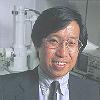- JST Home
- /
- Strategic Basic Research Programs
- /
 ERATO
ERATO- /
- Research Area/Projects/
- Completed/
- YOKOYAMA Nano structured Liquid Crystal
YOKOYAMA Nano structured Liquid Crystal

Research Director: Dr. Hiroshi Yokoyama
(Director, Nanotechnology Research Institute, National Institute of Advanced Industrial Science and Technology (AIST))
Research Term: 1999-2004
The Yokoyama Nano-structured Liquid Crystal project took a very interdisciplinary approach to the subject of liquid crystals and their self-organizing characteristics while emphasizing surface physics combined with nanotechnology. This approach involved both top-down (fabrication) and bottom-up (building from atoms and molecules) perspectives, which were found to merge.
Research Results
In-plane bistability: A robust in-plane bistability of liquid-crystal surface alignment based on tailored submicrometer-sized surface domains was found to impose a frustrated alignment. By a nano rubbing technique utilizing an atomic-force microscope, an oriented checkerboard pattern could be prepared on a polimide layer, consisting of square unit domains on which the alignment was locally constrained to be planar, yet orthogonal between the neighboring domains. Due to the four-fold rotational symmetry of the pattern, the two diagonal axes of the square domain become equally stable directions for macroscopic liquid-crystal alignment. The alignment can be switched between the two states by an in-plane electric field above a certain threshold, determined by local azimuthal anchoring. The concept will open the way to fabricate new display devices with low power consumption.
Structure of topological defects: A numerical investigation was made on the structure of topological defects close to a spherical particle immersed in a uniformly aligned nematic liquid crystal. To this end, an adaptive mesh refinement scheme was implemented in an axi-symmetric three-dimensional system, which made it feasible to properly take into account the large length scale difference between the particle and the topological effects.
3-Dimensionsl defect structure: Shearing a water-in-cholesteric liquid crystal was found to generate a 3-dimensional defect array structure. Doped nematic liquid crystal: A dynamic manipulation of droplets by light was achieved in a nematic liquid crystal doped with photochromic azobezene derivatives.
Chiral twin enantiomers: Novel series of symmetrically substituted chiral twin enantiomers were synthesized and found to exhibit a wide temperature range of stable ferroelectric and antiferroelectric phases.
Photonic liquid crystal: A novel transparent iridescent smectic blue phase in a chiral twin/monomer commensurate mixture was discovered. It is characterized by the simultaneous presence of the finite local order parameter of a helix and of a smectic layer, while being spontaneously isotropic without any characteristic discontinuity on a mesoscopic length scale.
Theoretical clarification: The mechanism of photo-induced traveling waves was studied theoretically in liquid-crystalline monolayers. Traveling waves of molecular orientation in liquid-crystalline monolayers are formed, when the constituent molecules undergo trans-cis photo-isomerization under illumination with linearly polarized light. A theoretical model of this phenomenon was constructed. Based on this model, a numerical simulation for the first time successfully reproduced phenomena that had not been understood theoretically for many years.
Additional simulations were performed concerning the local structures of a thermotropic cube phase-forming molecule. Spontaneous formations of hydrogen-bond networks and smectic ordered clusters were obtained.














